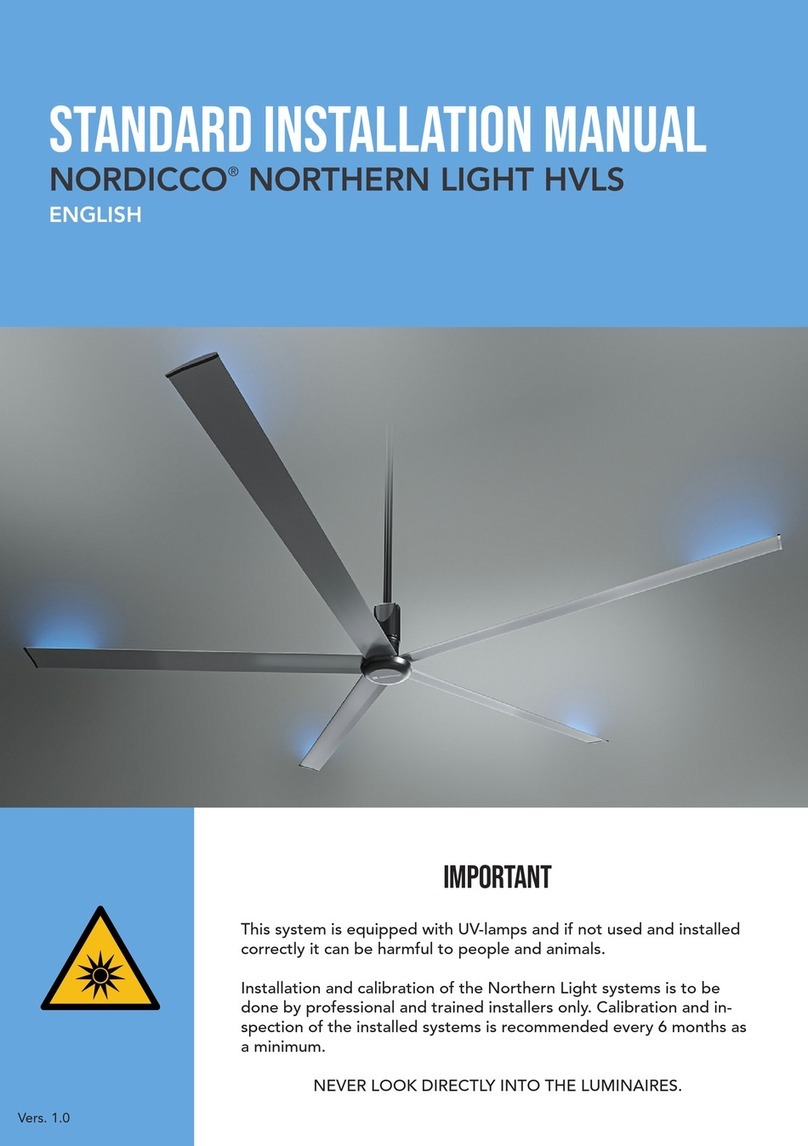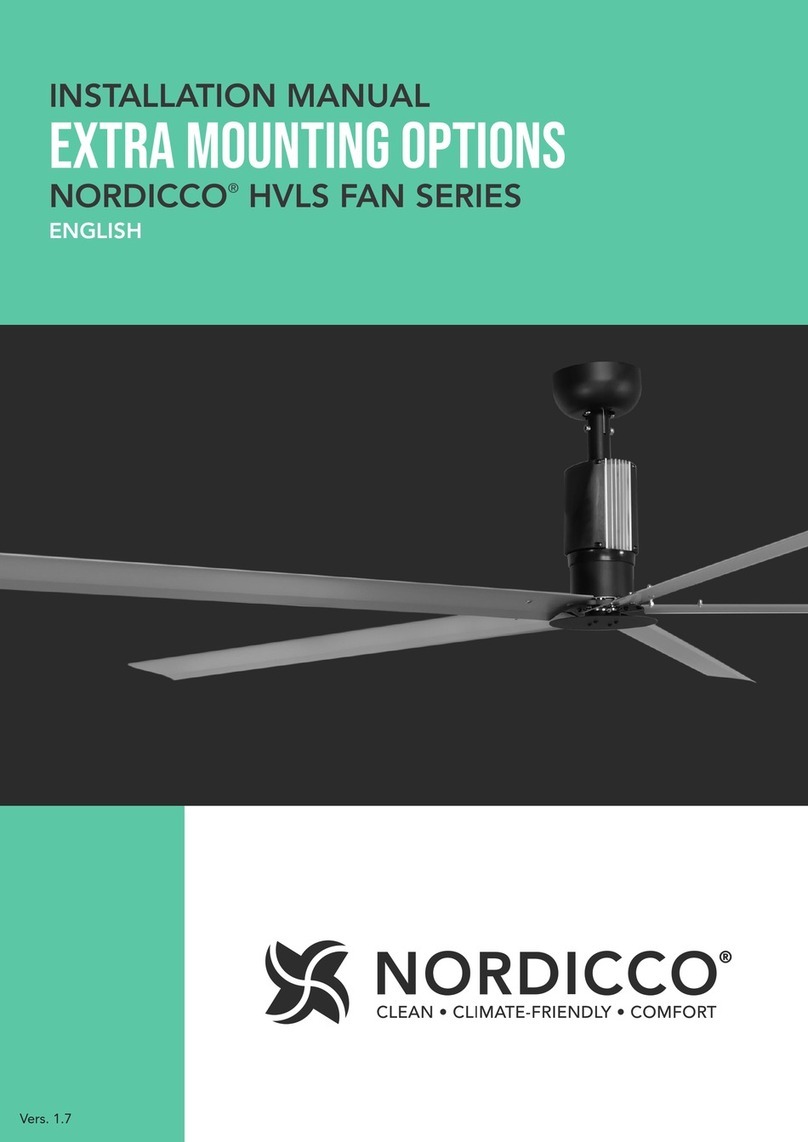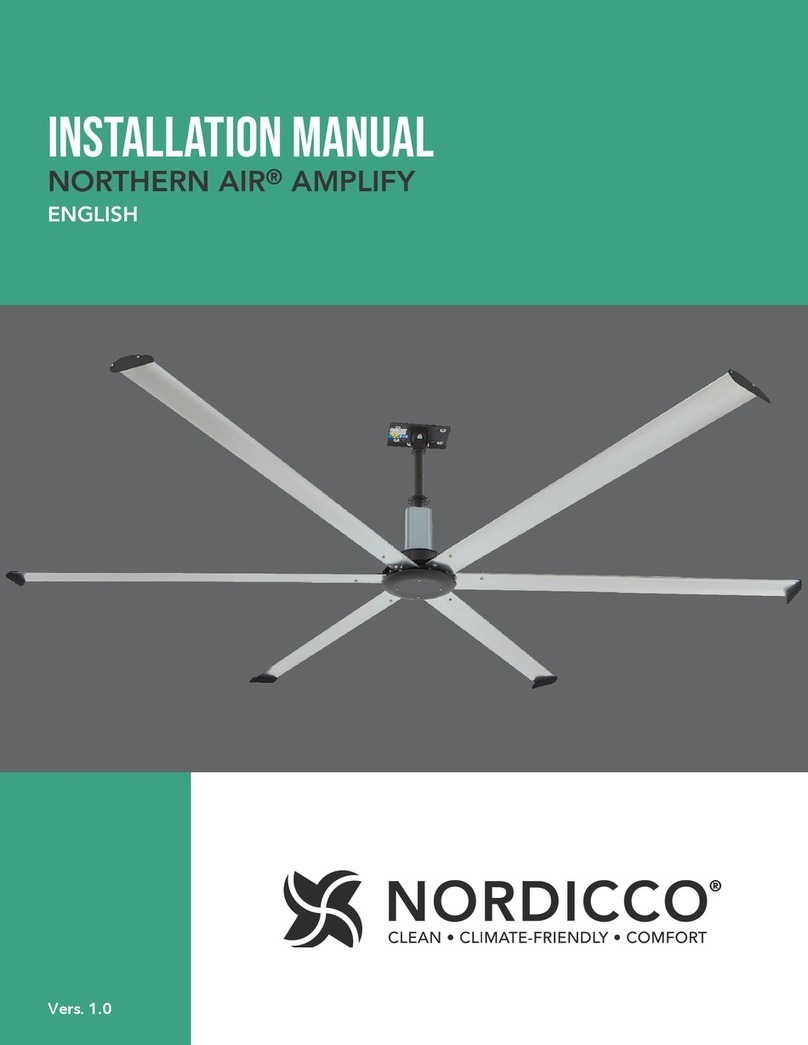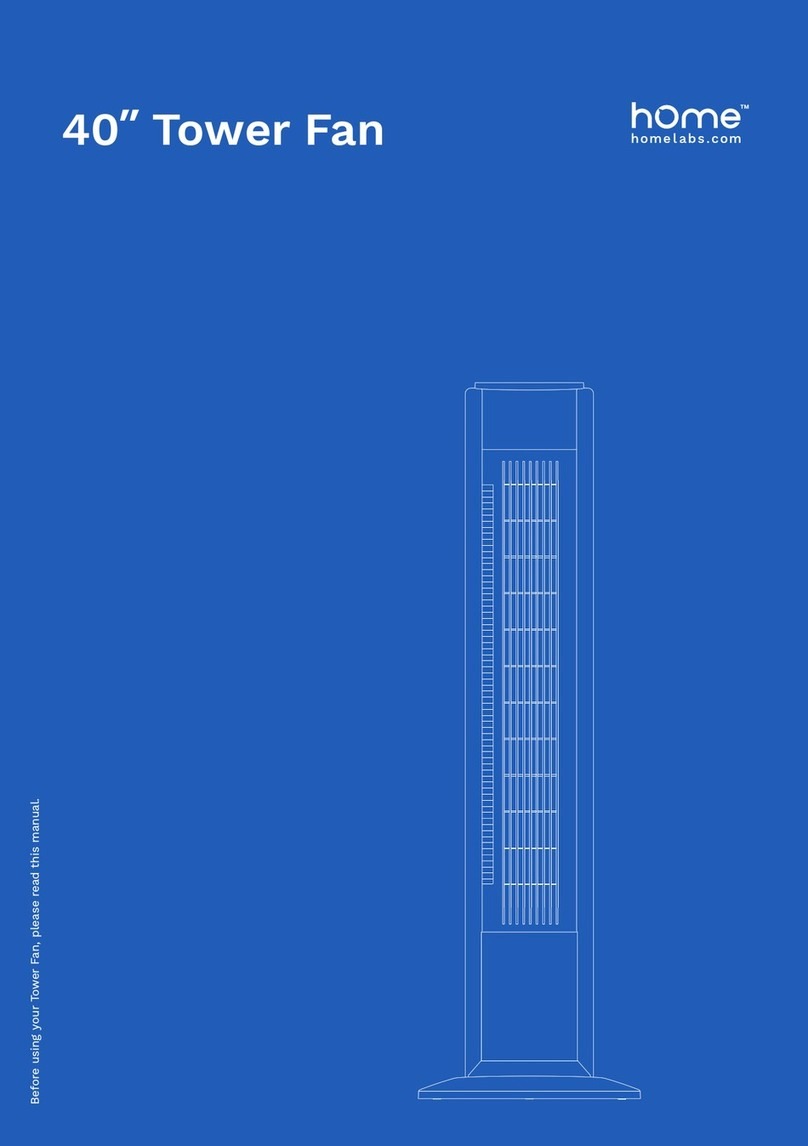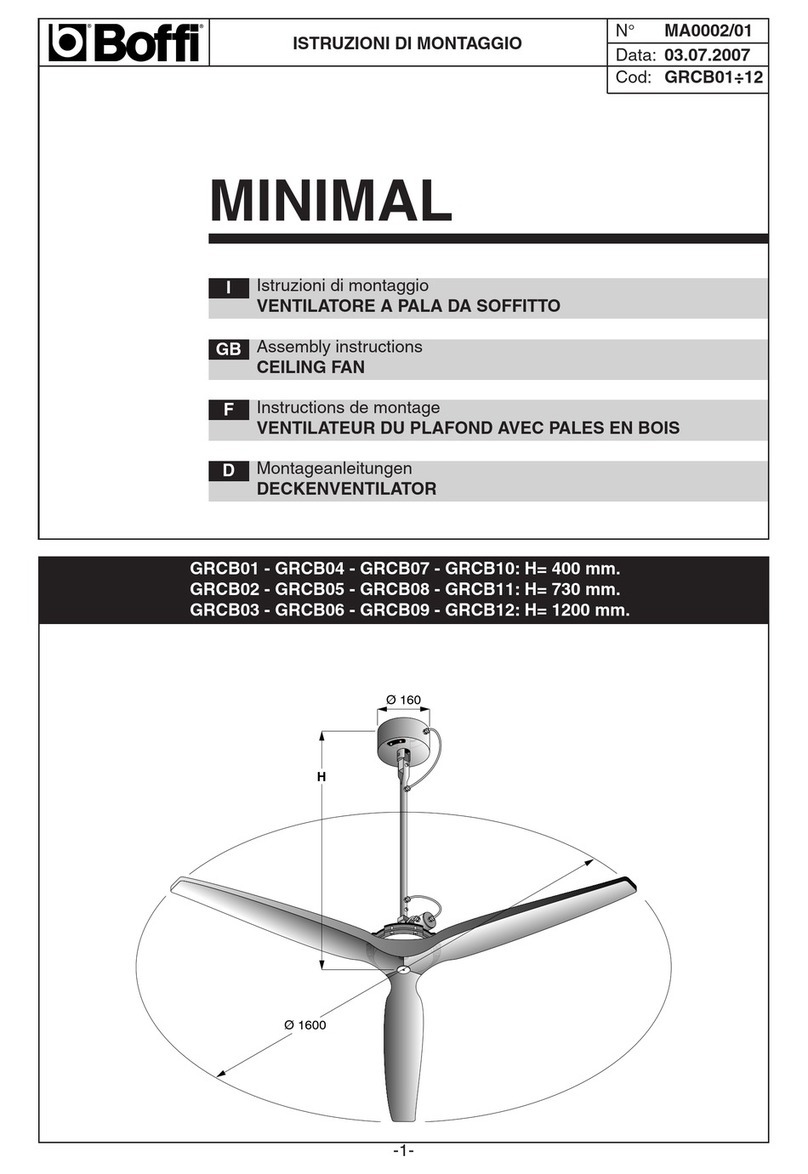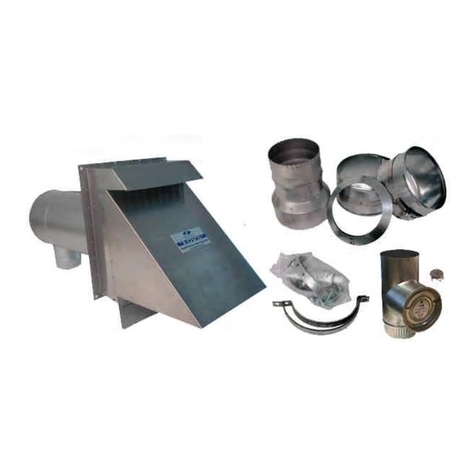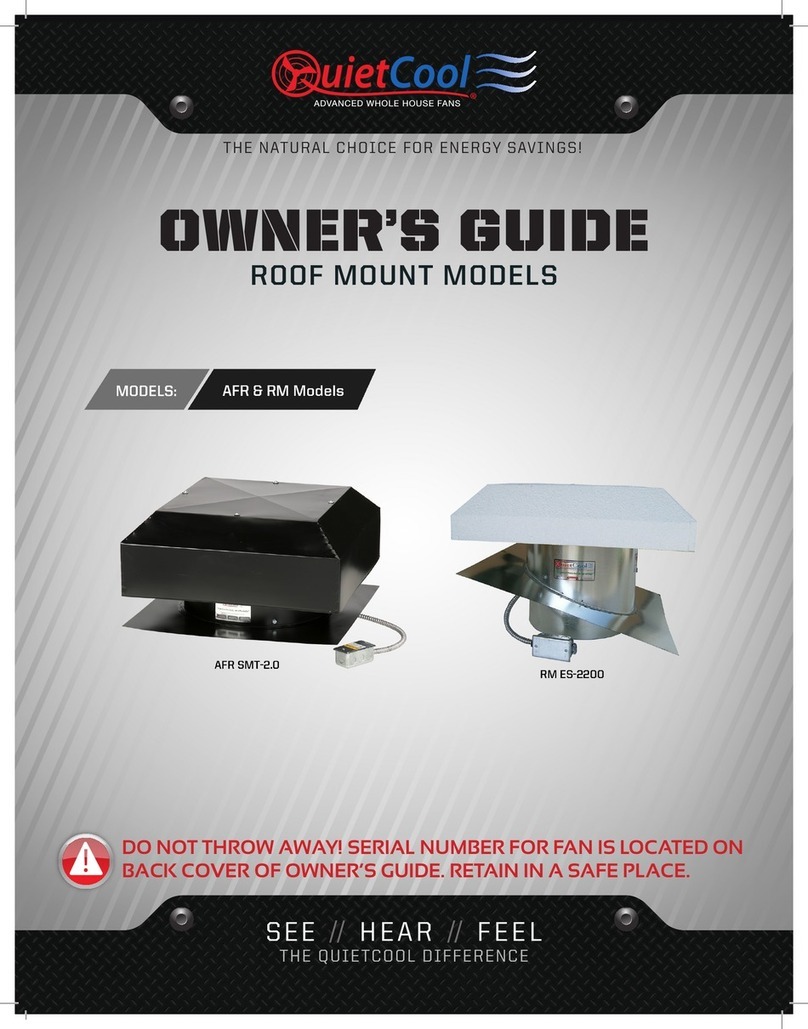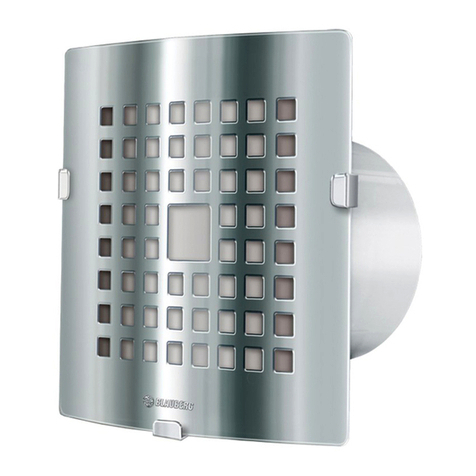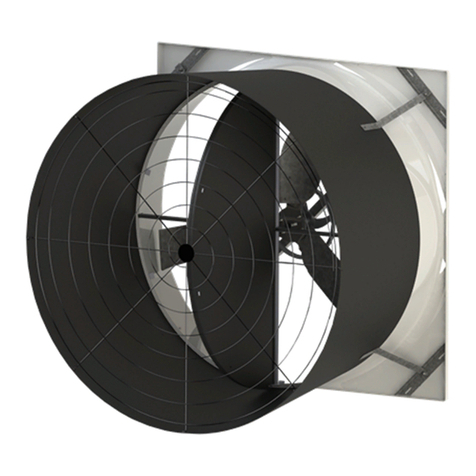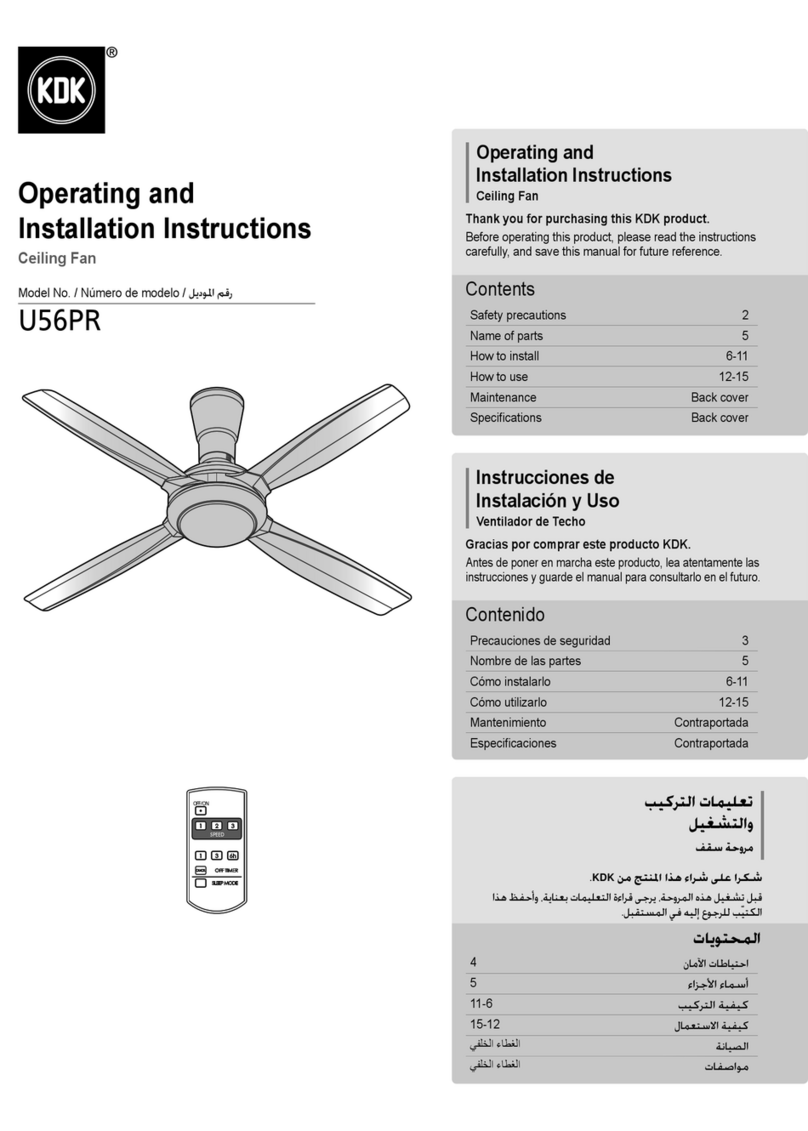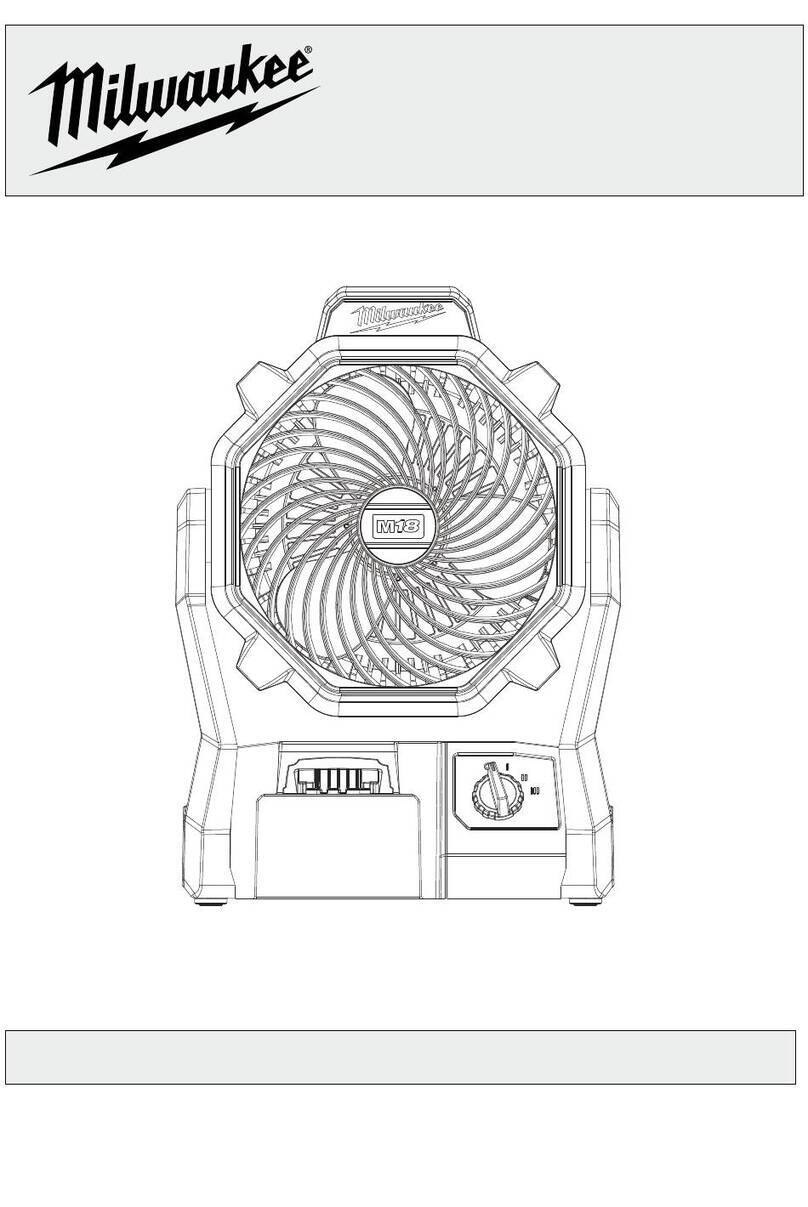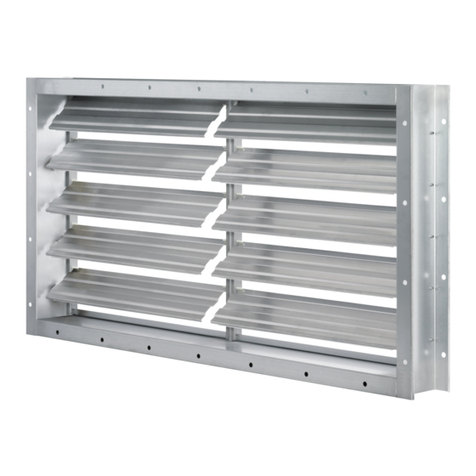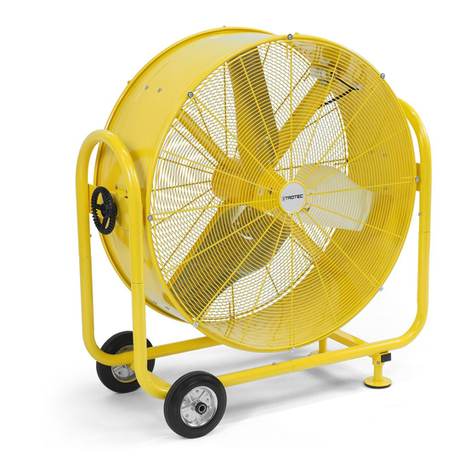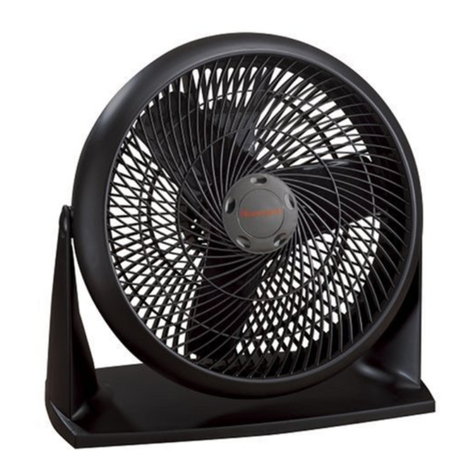
FIRE PRECAUTIONS
BEST PRACTICE IN RELATION TO FIRE AND FIRE HAZARDS
Since the installation and use of HVLS fans are not regulated by any official legislation or
building regulations in relation to fire protection in Denmark, NORDICCO A/S and DBI (The
Danish Institute of Fire and Security Technology) have prepared this guide to ensure optimal
installation of HVLS fans. DBI has assessed that NORDICCO®HVLS fans can be installed without
compromising fire safety. However, it should be noted that the smaller the rotor diameter of the
HVLS fan, the lower the risk of a fire spreading. The risk of fire spreading also depends on the
location of the individual HVLS fan. Three (3) scenarios are described below, where it is relevant
to assess the early detection of an incipient fire. In case of doubt, a competent advisor should be
consulted for an assessment of the specific situation.
Scenario 1: NORDICCO®HVLS fans installed in a room without any fire protection systems.
Generally, HVLS fans can be installed without any restrictions, but the following points
should be considered:
1. The HVLS fans should be installed so that they can be easily disconnected – for example
via a control panel, emergency stop button or safety switch mounted visibly at exits or
located at strategic locations in the room.
2. A vertical respecting distance of at least 0.5 meters from combustible / flammable storage
should be kept, to ensure that any fire spread is reduced.
3. HVLS fans should be installed as far from storage (e.g. storage shelves) as possible. When
installing in shelved storage sections, fans should be installed above walking aisle and not
over actual storage racks.
Scenario 2: NORDICCO® HVLS fans installed in a room, where an Automatic Fire Alarm
system is installed. In addition to DBI's normal guidelines for Automatic Fire Alarm
systems, the following points are also relevant:
1. The HVLS fans must stop when the Automatic Fire Alarm system detects a fire and
preferably do so even before a fire is detected. This can be achieved via the built-in "fire
alarm cable" or by using manual stop options, as indicated in scenario 1.
2. For systems with flame detectors, the location of the HVLS fans should be assessed in
relation to the flame detectors’ location. There are examples of ceiling fans causing
reflections that are mistaken for light from a flame, thereby giving an unintended alarm.
Flame detectors are typically used in rooms with high ceilings and in atriums.
3. The HVLS fans must not be installed in the line of sight of a linear smoke detector, as this
may cause false alarms to trigger on the Automatic Fire Alarm system. A linear smoke
detector uses invisible beams of ultraviolet and infra-red light. The light is either received
or reflected on an opposing wall. The Automatic Fire Alarm system goes into fault mode if
the light beam is interrupted.
4. Where point smoke detectors are installed, several points must be considered:
a) The velocity of the airflow from the HVLS fan must not exceed 0.5 m/sec. This value
corresponds to the value in DBI guideline 232 for airflows from ventilation systems.
b) A respecting distance of at least 0.5 meters must be maintained from point smoke detectors to
the HVLS fan blades. In case of doubt about the location of the HVLS fans in rooms where
Automatic Fire Alarm systems are installed, an approved installation company should
assess the specific case. The installation company must be approved to project installation
designs that follow the guidelines according to which the actual Automatic Fire Alarm system
is installed.

























